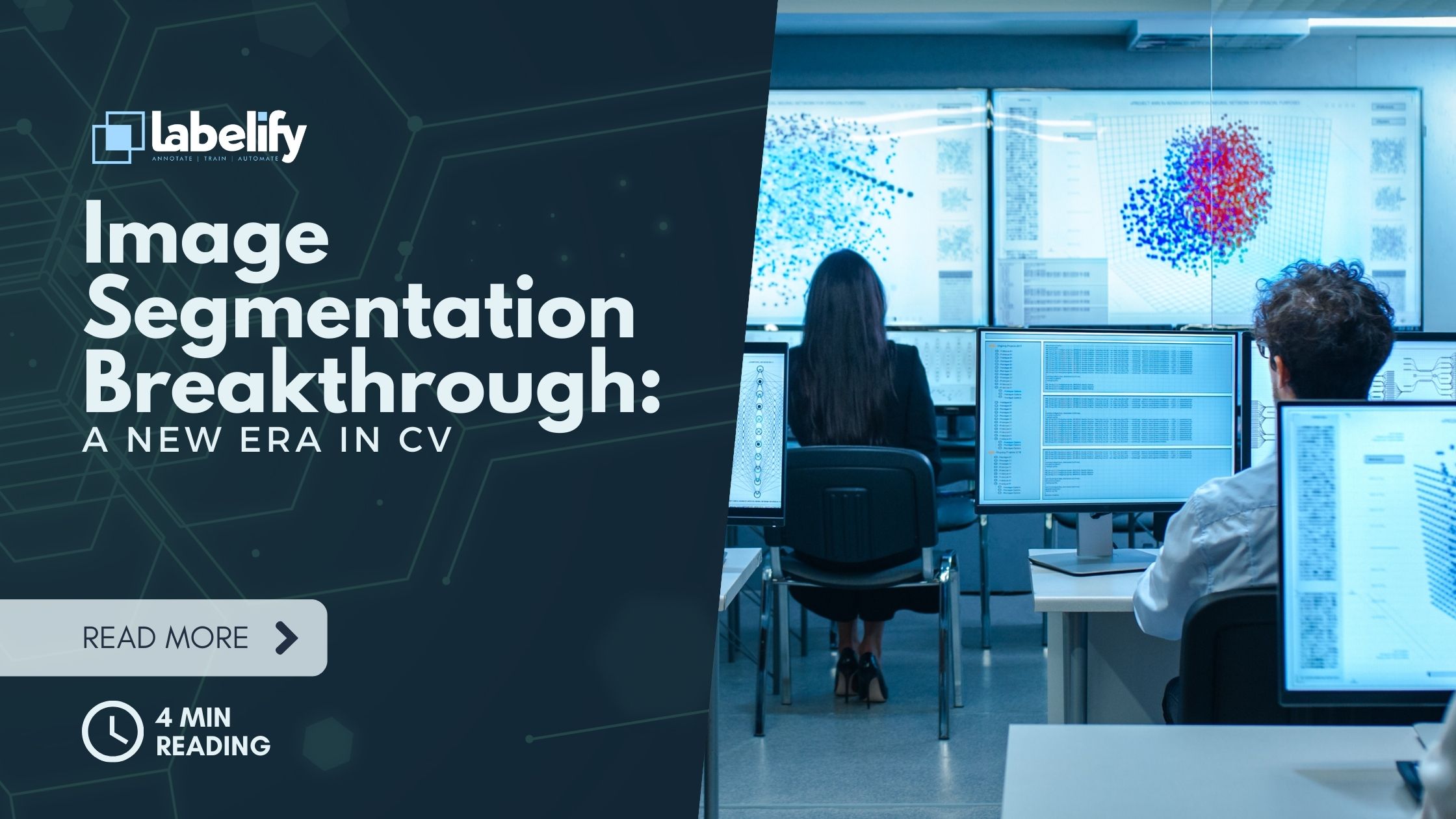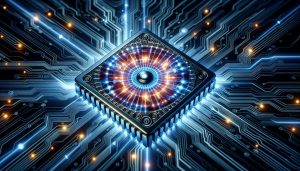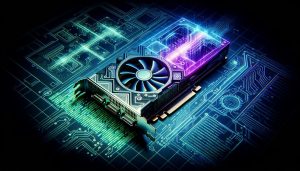We are thrilled to introduce a groundbreaking development in image segmentation that will revolutionize how we perceive and analyze visual data.
This cutting-edge technique, powered by deep learning and advanced neural networks, achieves unprecedented accuracy and speed.
With precise shape delineation and pixel-level classification, it has the potential to transform industries like healthcare and autonomous vehicles.
Join us on this visionary journey as we uncover the immense potential of this game-changing innovation in visual analysis.
Get ready for liberation in image segmentation.
Key Takeaways
- Image segmentation is a computer vision task that segments an image into fragments and assigns a label to each fragment.
- There are different types of image segmentation, including instance segmentation, semantic segmentation, and panoptic segmentation.
- Techniques for image segmentation include region-based techniques, edge detection, thresholding, and clustering.
- Deep learning models like U-Net and Mask R-CNN have achieved high accuracy and speed in image segmentation.
Importance of Image Segmentation
Image segmentation plays a pivotal role in our understanding and analysis of complex visual data. It's a revolutionary technique that liberates us from the limitations of traditional image processing methods.
By segmenting an image into distinct regions, we can extract valuable information and gain deeper insights into the underlying objects and structures. However, challenges in image segmentation arise due to factors such as variations in lighting, occlusions, and complex object boundaries.
Evaluating the performance of image segmentation algorithms is crucial to ensure accurate and reliable results. We need innovative approaches that push the boundaries of traditional methods and harness the power of deep learning.
With advancements in technology, we can overcome these challenges and unlock the full potential of image segmentation, revolutionizing fields such as medical imaging, video surveillance, autonomous vehicles, and more.
Different Types of Image Segmentation
There are various categories of image segmentation techniques that offer distinct approaches to segmenting images. These techniques, powered by advanced image segmentation algorithms, break down complex images into meaningful segments, revolutionizing the way we perceive and analyze visual data.
However, challenges in image segmentation persist, such as accurately identifying object boundaries and handling occlusions. Despite these challenges, innovative solutions continue to emerge, pushing the boundaries of what's possible.
By leveraging deep learning and sophisticated architectures like U-Net and Mask R-CNN, image segmentation algorithms have achieved remarkable accuracy and speed. These advancements have opened up new possibilities in domains such as medical imaging, video surveillance, autonomous vehicles, agriculture, satellite imagery, robotics, art, design, gaming, and fashion.
With each new breakthrough in image segmentation, we inch closer to a future where visual liberation is within our grasp.
Key Techniques for Image Segmentation
To delve into the realm of key techniques for image segmentation, we continue our exploration of the breakthroughs in this field and their impact on various industries. Here are five game-changing techniques that are revolutionizing image segmentation:
- Deep learning: Harnessing the power of artificial neural networks, deep learning achieves remarkable accuracy and speed in image segmentation. It uses an encoder-decoder architecture to extract features and generate precise segmentations.
- Region-based techniques: These techniques detect similarities in pixels of segments that are in close proximity to each other, enabling accurate segmentation by focusing on local similarities.
- Edge detection: By emphasizing object edges, edge detection techniques provide reliable results in image segmentation, ensuring precise and sharp boundaries between segments.
- Thresholding: This technique converts the original image into a binary map based on a predefined threshold, simplifying the segmentation process and enhancing the distinction between different segments.
- Clustering techniques: By employing clustering algorithms, these techniques group pixels based on their similarity, enabling effective segmentation by identifying clusters of pixels with similar characteristics.
As we embrace these key techniques, we must also address image segmentation challenges and anticipate future trends in this field. Through continuous innovation, we can empower industries with liberated and groundbreaking solutions that push the boundaries of what's possible.
Advantages of Deep Learning in Image Segmentation
We have discovered several advantages of utilizing deep learning in image segmentation.
Deep learning models, such as U-Net and Mask R-CNN, offer unparalleled accuracy and speed, revolutionizing the field of computer vision. These models leverage their powerful encoder-decoder architectures to effectively segment images, enabling precise object detection and labeling on a pixel level.
With deep learning, we can overcome the limitations of traditional techniques, such as region-based or edge-based segmentation, which often struggle with complex and diverse images.
Additionally, deep learning allows for end-to-end learning, eliminating the need for handcrafted features and simplifying the implementation process.
While challenges in implementing image segmentation may arise, such as training on large datasets or fine-tuning models, deep learning offers a promising solution that liberates us from the constraints of traditional methods.
Notable Models for Image Segmentation
In our exploration of image segmentation, we now turn our attention to the notable models that have revolutionized this field. These models have brought innovation and liberation to the world of image segmentation, overcoming challenges and opening up new possibilities.
Here are five remarkable models that have made a significant impact:
- U-Net: This model, with its encoder-decoder architecture, has shown exceptional performance in various applications, including medical imaging and autonomous vehicles.
- Mask R-CNN: Combining the power of instance segmentation and object detection, this model has enabled advanced object recognition and tracking in video surveillance and robotics.
- PSPNet: With its pyramid pooling module, PSPNet has excelled in semantic segmentation tasks, providing accurate labeling of all pixels in an image.
- DeepLab: This model utilizes dilated convolutions and atrous spatial pyramid pooling to achieve precise and efficient semantic segmentation, making it ideal for satellite imagery and environmental monitoring.
- FCN: Fully Convolutional Networks have played a vital role in early breakthroughs in image segmentation, paving the way for subsequent advancements.
These models have transformed the applications of image segmentation, pushing boundaries and empowering industries such as medical imaging, video surveillance, autonomous vehicles, agriculture, satellite imagery, robotics, art and design, gaming, and fashion and retail. They've embraced the challenges of image segmentation and emerged as game-changers in this field of liberation.
Benchmark Datasets for Image Segmentation
Our exploration of image segmentation continues with an examination of benchmark datasets for this revolutionary technique.
Benchmark datasets play a crucial role in advancing the field of image segmentation, as they provide standardized data for testing and evaluating the performance of different algorithms and models.
However, these datasets also present challenges. One of the main challenges is the lack of diversity in the datasets, which can limit the generalizability of the segmentation models.
Another challenge is the time-consuming and costly process of labeling the datasets manually.
To address these challenges, future advancements in benchmark datasets should focus on increasing diversity by including a wide range of images from different domains and improving the efficiency of data labeling through automation and crowd-sourcing.
Real-World Applications of Image Segmentation
With the advent of image segmentation, the possibilities for real-world applications have expanded exponentially. This groundbreaking technology is revolutionizing various industries, liberating us from old limitations and opening up new horizons.
Here are five visionary applications that showcase the immense potential of image segmentation:
- Medical diagnosis and treatment: Image segmentation aids in analyzing medical images, enabling accurate diagnosis and personalized treatment planning.
- Environmental monitoring: By categorizing land use and analyzing satellite imagery, image segmentation helps in monitoring and preserving our environment.
- Autonomous vehicles: Image segmentation allows vehicles to perceive and understand their surroundings, ensuring safer and more efficient transportation.
- Video surveillance: Real-time object detection and tracking offer enhanced security and surveillance capabilities, promoting public safety.
- Robotics and automation: Image segmentation empowers robots to recognize and interact with objects in their environment, unlocking new possibilities in industrial automation.
However, implementing image segmentation in real-world scenarios poses challenges like computational complexity and data privacy. Ethical considerations must also be addressed to ensure responsible and fair use of this powerful technology. Nonetheless, the potential for liberation and progress is undeniable. Image segmentation is truly a game-changer with the power to transform our lives.
Frequently Asked Questions
How Does Image Segmentation Differ From Object Detection?
Image segmentation differs from object detection in that it focuses on precisely outlining the shape of an object within an image.
Object detection, on the other hand, identifies and localizes the presence of objects in an image.
Image segmentation is essential in various applications, such as medical diagnostics, where it helps analyze medical images for diagnosis.
In autonomous vehicles, different image segmentation algorithms are compared to enable vehicles to perceive and comprehend their surroundings.
This ensures safer and more efficient navigation.
What Are Some Limitations of Region-Based Techniques in Image Segmentation?
Region-based techniques in image segmentation have certain limitations. Challenges arise in detecting similarities in pixels of segments in close proximity, as this may not accurately capture the boundaries between objects. Drawbacks include difficulties in handling complex scenes with overlapping objects, as well as the need for manual tuning of parameters.
These limitations hinder the ability to achieve precise and reliable segmentation results. However, innovative approaches in deep learning and other advanced techniques are constantly evolving to overcome these challenges and revolutionize image segmentation.
How Does Thresholding Work in Image Segmentation?
Thresholding techniques play a crucial role in image segmentation by converting an image into a binary map based on a predefined threshold.
Different thresholding methods are used to distinguish objects from the background, such as global thresholding, adaptive thresholding, and Otsu's thresholding.
These techniques simplify the segmentation process, making it more efficient and accurate.
How Does Deep Learning Achieve High Accuracy and Speed in Image Segmentation?
Exploring optimization techniques, we understand the role of convolutional neural networks in achieving high accuracy and speed in image segmentation with deep learning.
By leveraging the power of neural networks, we can effectively process and analyze large amounts of visual data, allowing for precise segmentation of objects in images.
This revolutionary approach revolutionizes computer vision, empowering us to unlock new possibilities and liberate our understanding of the world through advanced image segmentation techniques.
What Are Some Other Industries and Fields That Can Benefit From Image Segmentation Technology?
Innovative image segmentation technology has the potential to revolutionize various industries and fields.
For medical diagnosis, it can aid in analyzing medical images for accurate and efficient diagnosis.
In the realm of autonomous vehicles, image segmentation enables vehicles to perceive and comprehend their surroundings, enhancing safety and navigation capabilities.
These advancements in image segmentation open up new possibilities for liberation and progress in multiple domains, empowering us to unlock the full potential of technology for the betterment of society.
Conclusion
In conclusion, the revolutionary image segmentation technique we've explored in this article is a true game-changer in the field of visual analysis.
By harnessing the power of deep learning and advanced neural networks, this groundbreaking approach has the potential to transform various industries, from healthcare to autonomous vehicles.
With its unparalleled accuracy and speed, this technique opens up new possibilities for object recognition, medical imaging, video surveillance, and more.
Get ready to witness a bold and innovative transformation in the way we perceive and analyze visual data.




